Top 10 Castles in Romania
Discover RomaniaIt is no secret that Romania is renowned for its impressive medieval castles. But because it is quite impossible to visit all of them in one trip, we put together a list of some of the most beautiful castles in Romania that should not miss from your bucket list.
1. Peles Castle

Our list starts with the beautiful Peleș Castle.
Located in the heart of the Carpathian Mountains, in the beautiful region of Sinaia, this stunning castle stands out from between the tall forest. Its construction began in the late 19th century, in 1873, and was finished in 1914.
It was built as a summer residence for the Romanian Royal Family by King Carol I, and it gives the impression that it's still waiting for the return of its former owners.
The decorations are in an excellent condition, and the castle is home to thousands of artifacts sitting on display, brought in from all over the world.

Throne Room, Peles Castle
The Castle was seized by the communist regime in 1947 after the forced abdication of Romania's last monarch, King Michael I, and it was briefly turned into a museum in 1953 and closed in 1975.
After the Romanian Revolution of 1989, Peles Castle was re-established as a cultural site.
Fun fact: Peleș Castle was the first fully electrified castle in Europe and the first in the world to have central heating through the walls and floors.
2. Bran Castle
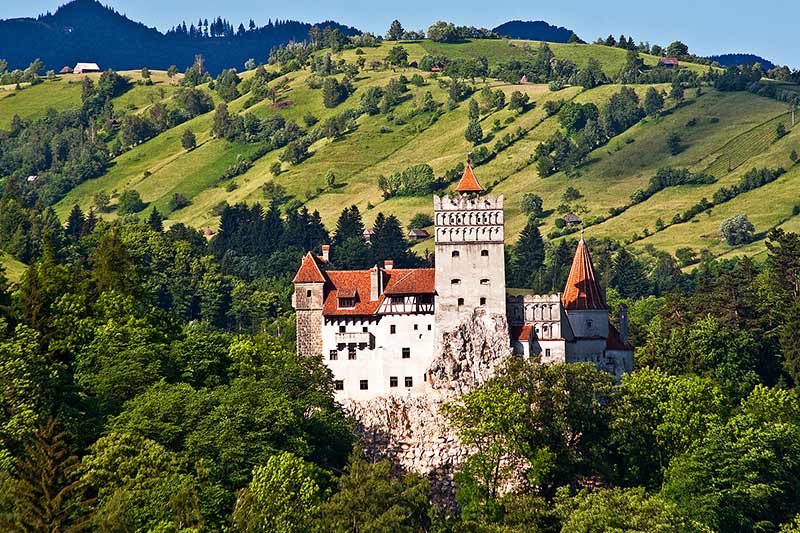
Bran Castle is probably the most famous of all Romanian castles.
Built by the Saxons of Brașov on top of an older wooden castle erected by the Teutonic Knights, it is known worldwide as Count Dracula’s mysterious residence. Its medieval look, with pointy towers, narrow corridors, steep stairs, and dark rooms, fed the imagination of many tourists, writers, and film directors.
Due to its alleged connection with both Dracula and the Romanian royal family, Bran Castle is a place where legends and history meet, creating an unforgettable experience for all who pass through its gates. Its uniqueness also brought Bran a well-deserved place in the "top 10 most beautiful castles in the world" conducted by CNN. (Check out the top at Edition CNN)
*Starting from May 2019, you can have a Dracula's Castle tour by night.
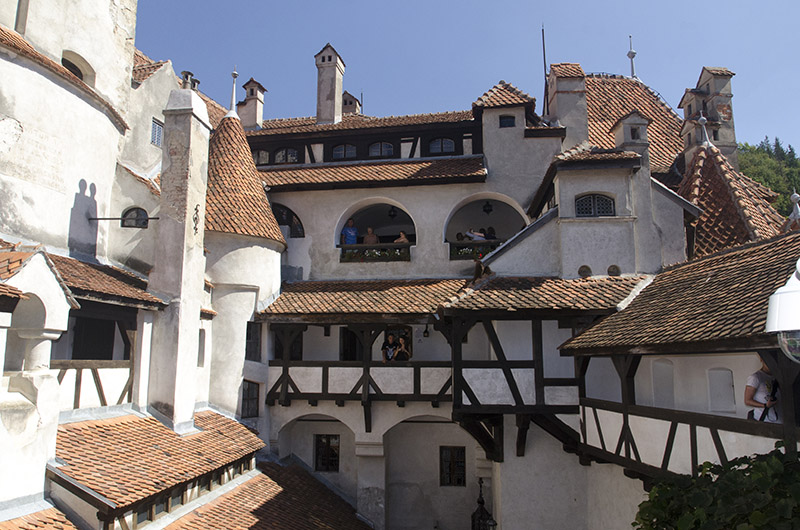
Inner courtyard of Bran Castle
Fun fact: Vlad the Impaler had little to do with Bran Castle. In fact, there are no records of him ever visiting the residence.
3. Corvin Castle

Corvin Castle, also known as Hunyadi Castle or Hunedoara Castle, was named one of the spookiest buildings around the world by the Lonely Planet. The same magazine included it in the top 10 most fairytale-like European castles, but only because „sometimes fairy tales are actually nightmares”.
In reality, Corvin Castle is an authentic Gothic construction, built in 1446 and owned by the kings of Hungary. Its dark history and the fact that many historians claim that here it's where the famous voivode Vlad the Impaler was kept prisoner, the very source of Dracula’s myth, brought Corvin Castle the reputation of a place of terror and disgrace.
4. Sturdza Castle

Sturdza Castle is located in Miclaușeni, and it is one of the most romantic and serene places that you can visit in Romania. The royal domain includes a beautiful lake and a park with secular trees, older than the construction itself. The castle was built by Sturdza family, a respected and well-known Moldavian family which gave Romania many fair rulers and men of culture.
The castle was built in a Neogothic style and was designed to impress as the family motto, engraved on the castle’s façades, claims: Utroque clarence plectrum - Beauty shines everywhere.
Restoration work on the castle began in 2004, and several original pieces of furniture were preserved and restored between 2003 and 2005.
5. Iulia Hasdeu Castle
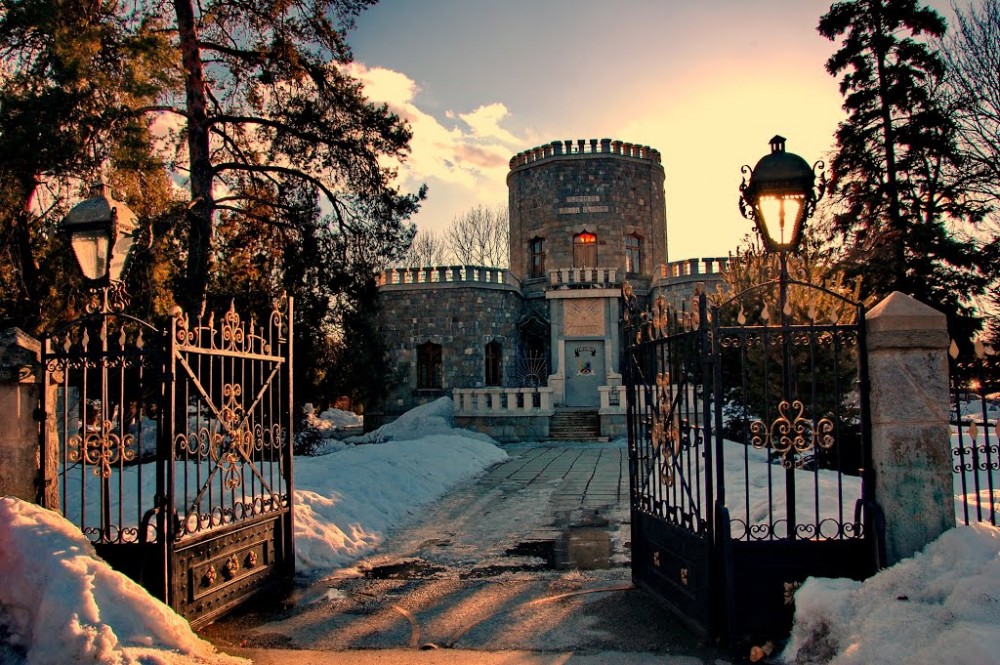
Iulia Hașdeu Castle, photo by Monerique
The Iulia Hașdeu Castle has, by far, one of the most touching backstories, and it is a testimony to the pain a father had to endure after the loss of his only daughter.
Bogdan Petriceicu Hașdeu was a famous Romanian writer and philologist, and his daughter was the genius Iulia, the first Romanian woman accepted at the Sorbonne University in Paris, who died of tuberculosis at the age of 19.
It is said that after her death, B. P. Hașdeu decided to build a castle in her honor but the plans were dictated by Iulia herself during the many spiritism sessions. The castle abounds in symbolism, one of the rooms being specially designed to allow Iulia’s spirit to return and communicate with her beloved father.
6. Fagaras Citadel
The construction of the Fagaras Citadel started in 1310 on the grounds of an older fortification made of wood and dirt.
It was built in order to provide a strategic advantage in defending the South-East of Transylvania from the invasion of Tatars and Ottomans. In 1526 it was reinforced in order to become even stronger, doubling the walls in thickness.
In 1541 it was attacked and its ruler was captured, but Michael the Brave (Mihai Viteazul) captured it back in 1599 and offered it to his wife as a gift.
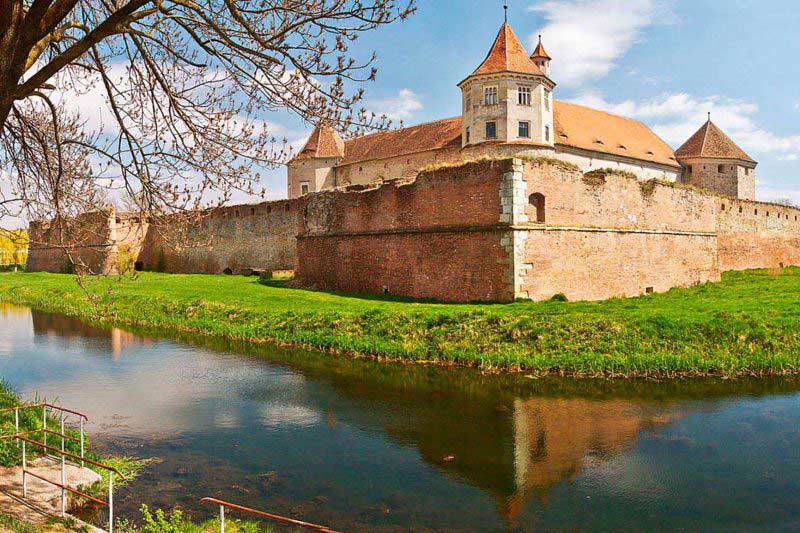
Legend has it that for several years, the citadel was home to a gruesome torturing mechanism.
Similar to the iron maiden, the captive had to kiss an icon of the Holy Mary, the mother of Jesus, which was placed on the chest of a statue. But once he did so, he would have triggered a mechanism, and several daggers would puncture his whole body. The daggers would then pull back, and the dead body would fall through a trap door in the Olt River.
Under the communist regime, between 1946 and 1960, the citadel was used as a prison for the enemies of the communist system, and it was reconditioned between 1965 and 1977.
Today the citadel is home to the Fagaras Museum and to the main library.
7. Banffy Castle
In its days of glory, the Banffy Castle was known as Transylvania’s Versailles Castle.
In the 18th century, a famous Viennese architect left his mark on the beautiful castle by building a park, alleys, statues, and artesian wells, bringing a baroque look to the construction. The gate was also decorated with splendid stone statues.

The castle was constructed from a manor house which can be traced as far back as the 15th century. In 1944 the castle served as a field hospital but was plundered and devastated by German troops as retaliation against its owner. During the communist regime, it served as a driving school, farm, and a children’s hospital.
In 1999 it was included in the World Monuments Watch List of 100 Most Endangered Sites at the request of Transylvania Trust. In 2001 the renovations began under the Built Heritage Conservation Training Program. The program functions to this day and it teaches traditional building crafts skills for restoration, repair, and maintenance of historic buildings.
8. Cantacuzino Castle
The Cantacuzino Castle was built in 1911 in a Neo-Romanian style and belonged to the Cantacuzino family until it was nationalized in 1948.

During the communist era, the castle’s original furniture was removed and a part of its interior walls was painted over. After the fall of the communist regime in 1989, the castle was returned to the Cantacuzino family who sold it in 2004.
Today it serves as a museum, and the great hall of the castle holds the heraldries of the families united with the Cantacuzino family as well as various portraits of the family members.
9. Jidvei Castle
The Jidvei Castle was built between 1570 and 1580 and was renovated between 1615 and 1624 by Count Stefan Bethlen. Just like most of the Romanian castles, under the communist regime, most of the furniture, silverware, and silks were lost.

The castle was claimed in 1989 by the Haller family which sold it in 2003. Today it is being renovated but it occasionally holds wine tasting events and the „Golden Grape” Festival which mark the coming of the autumn and the perfect time to make wine.
During its reconstruction, there have been several findings on the site such as old gates that were built before the castle or a small bridge.
In the main hall, there is an impressive collection of 45 watches with a beautiful story behind it. When the owner turned 45, the people inhabiting the castle bought him 45 watches, representing the years of his life.
There are also several myths and legends surrounding the location, one of which claims that beneath the castle there is an underground passage that ties the Castle to Bethlen Castle.
Today the castle is famous for being the face of Jidvei wine.
10. Rasnov Citadel
Another one of the Romanian castles that were built as part of the Transylvanian defense system against the Ottomans and Tatars is the Rasnov Citadel.
Built between 1211 and 1225, it was used as a refuge by many people over the years, including Michael the Brave in 1600 and the Wallachian refugees of the resurgent movement led by Tudor Vladimirescu in 1821.
The citadel was partially destroyed over the years, in 1718 by a fire and in 1802 by an earthquake, but it was restored between 1955 and 1966, under the communist regime.
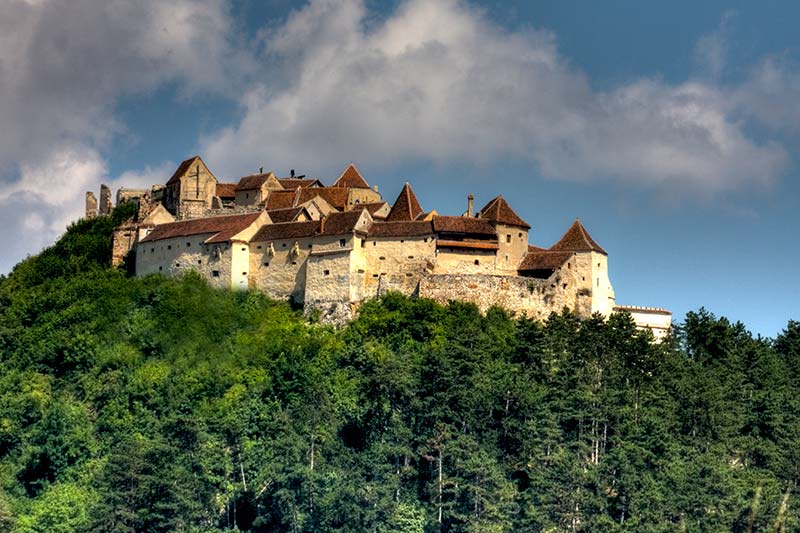
Due to the absence of water inside the citadel, it is said that during a siege, the inhabitants of the citadel forced two Turkish prisoners to dig the well for 17 years.
To this day, visitors can observe verses from the Quran written on the walls of the well. As for the fate of the two prisoners, no one really knows what happened. Some say that they were released after the well was completed, while others say that they were killed.
Another legend, told by elders, says that at the bottom of the well lies a 300-year-old treasure.
11. Bonus: Other castles and fortresses worth mentioning
A. Neamt Citadel
Another notable fortress is the Neamt Citadel. A medieval fortress located in the north-eastern part of Romania, the Neamt Citadel was built in the 14th century and expanded in the 15th century.
It was part of the successful defense line of Stephen the Great, together with Suceava, The White Citadel, and many others.
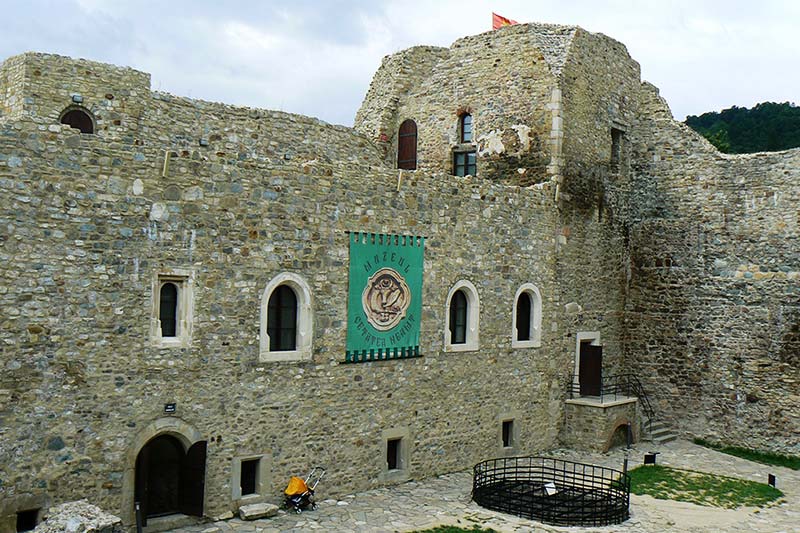
B. The Fortified Churches of Transylvania
While not exactly castles, these medieval defensive buildings are listed as a UNESCO World Heritage Site under the name of "The Villages with Fortified Churches in Transylvania", and they were founded by the Saxons of Transylvania between the 13th and 16th century.

Biertan Fortified Church
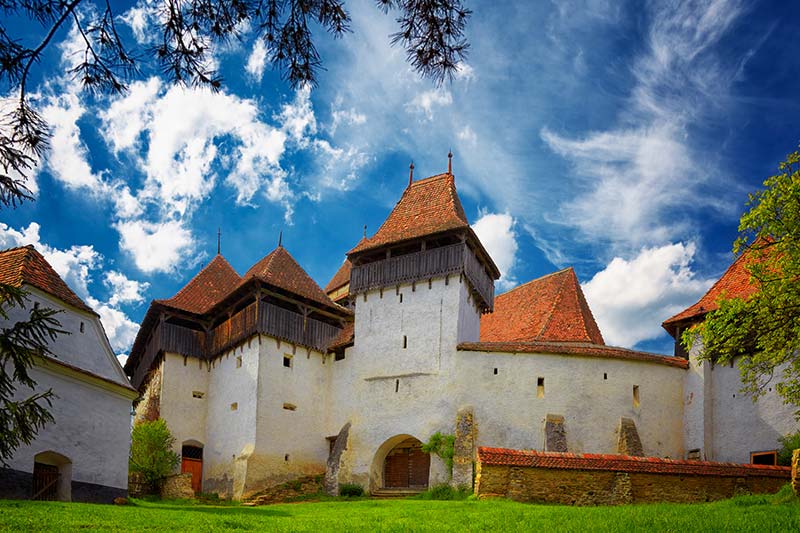
Viscri Fortified Church
In total, there is a number of seven villages, and these are their main attractions:
- Biertan Fortified Church
- Câlnic Citadel
- Dârjiu Fortified Church
- Prejmer Fortified Church
- Saschiz Fortified Church
- Valea Viilor Fortified Church
- Viscri Fortified Church
If you want to get a live view of some of the beautiful castles featured in this article and more, check out some of our tours to fortresses & castles in Romania.